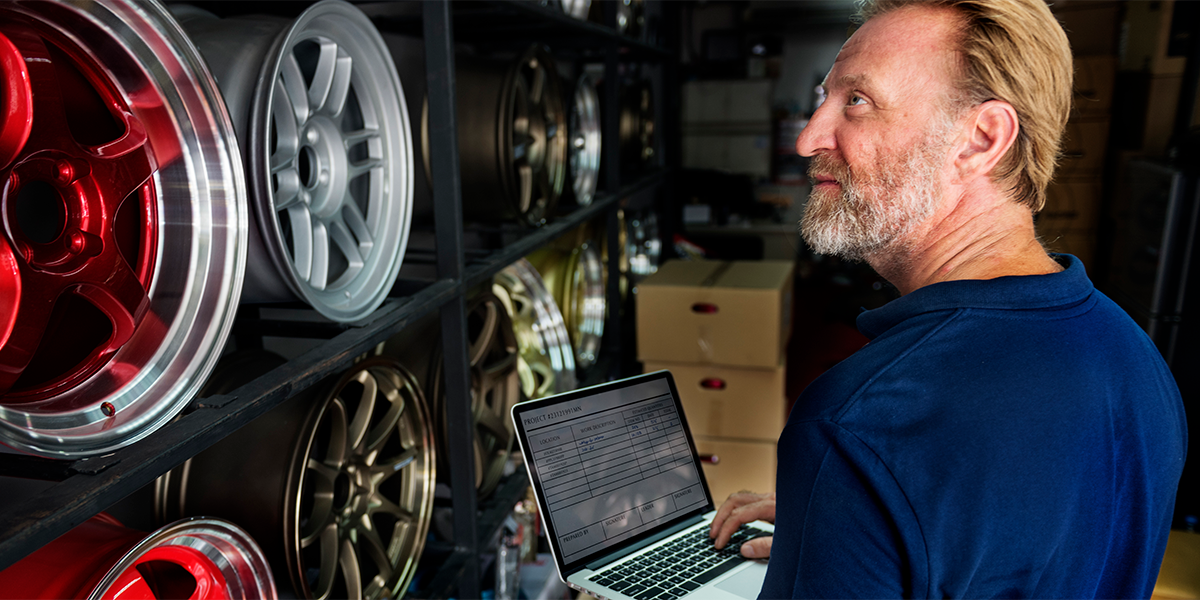

Over the last decade, automotive executives have been slow to adopt 3D printing except for limited applications. In the automotive sector, 3D printing has mainly been used for prototyping, tooling, and for printing select small car parts. There are five reasons all of that is now changing and automotive executives are increasingly adopting 3D printing for larger car parts, as well as for a wider array of small car parts.
Reason 1: Aerospace Executives Have Already Adopted 3D Printing
Many aerospace executives were early adopters of 3D printing. Their companies tried and tested the technology with great success. 3D printing is now widely used in the aerospace sector, and is often used to print what would otherwise be hard-to-find parts on-site, and on demand. This has increasingly led executives in the automotive industry to ask, “If 3D printing is trusted to build parts for a 200,000-pound vehicle that transports large groups of passengers through the skies, maybe it’s time to start considering it for manufacturing car parts.
Reason 2: Advances in Technology and the Expiration of Key Patents Have Opened Up New Possibilities
Automotive executives were slow to adopt 3D printing due to concerns that the technology would not allow them to produce high volumes of larger car parts fast enough. They also needed to ensure their car parts were highly durable and consistently met the rigorous testing standards in the automotive industry.
These old reasons for holding out from embracing 3D printing are no longer concerns due to advances in 3D printing technology. The expiration of key patents and healthy competition in the 3D-printer manufacturing market resulted in 3D printers that are now capable of printing larger, more durable, and more versatile car parts with powder metals and other materials. 3D printers also print faster, and can handle printing in the large volumes needed for the automotive sector. 3D printed parts now consistently meet the most rigorous automotive testing standards as well.
Reason 3: Other Automotive Executives are Doing It
Leading automotive manufacturer executives are seeing the value of 3D printing and starting to 3D print their car parts. Automotive executives are seeing Volkswagen, Ford, Daimler / Mercedes, and BMW adopt 3D printing on a large scale. They are seeing executives of major car part suppliers embracing 3D printing as well, including at AI Design, Autodesk, Voxeljet AG, Nano Dimension, Proto Labs, Concept Laser, Renishaw Plc.. There are also an increasing number of partnerships between automotive companies and 3D printer manufacturers – such as between HP and Volkswagon to produce custom-made 3D printers. These types of partnerships may be a model for the future in the automotive industry.
Reason 4: Reduced Reliance on Warehousing
Automotive executives have had to find ways to cut costs to remain competitive. They can no longer afford to warehouse large quantities of parts, or risk never using parts they have already manufactured. 3D printing makes it easier for automotive executives to rely less on warehousing because parts can be printed on-demand, and only in the volumes immediately needed. The money saved on warehousing can then be invested in the adoption of 3D printing technology.
Supply Chain Demands Responsiveness
A major driver in the adoption of 3D printing among automotive executives is the shift to digital supply chains, and the kind of “just in time†responsiveness that requires. Auto part suppliers are increasingly deciding to list parts in their supply chain that only exist digitally – that they have not yet produced. 3D printing allows companies to flexibly meet sudden surges in demand and fulfill their digital promises.
Conclusion
It is not all smooth sailing ahead for automotive executives who hope to adopt 3D printing. Psychological research suggests that people tend to over-value sunk costs. Automotive executives know this dilemma first-hand as they struggle to weigh sunk costs in their current manufacturing equipment against the costs of transitioning to 3D printing car parts.
Even with the adoption of 3D printers, automotive executives must still grapple with the ongoing lack of skilled workers entering the automotive sector today. The U.S. Department of Labor is investing millions into funneling more skilled workers into the automotive workforce, but their efforts will take time to address the magnitude of this problem. The chance to gain skills manufacturing with 3D printers – a technology of the future – compared with outdated, traditional manufacturing equipment, may help automotive executives attract the skilled workers they need.
Looking toward the future, the 3D-printing automotive market is projected to reach USD 1.56 Billion by 2020, and USD 3.9 USD billion by 2026. Automotive executives are increasingly deciding they need to lead the way in the massive transition to 3D printing car parts in order to maintain an edge in an increasingly competitive industry